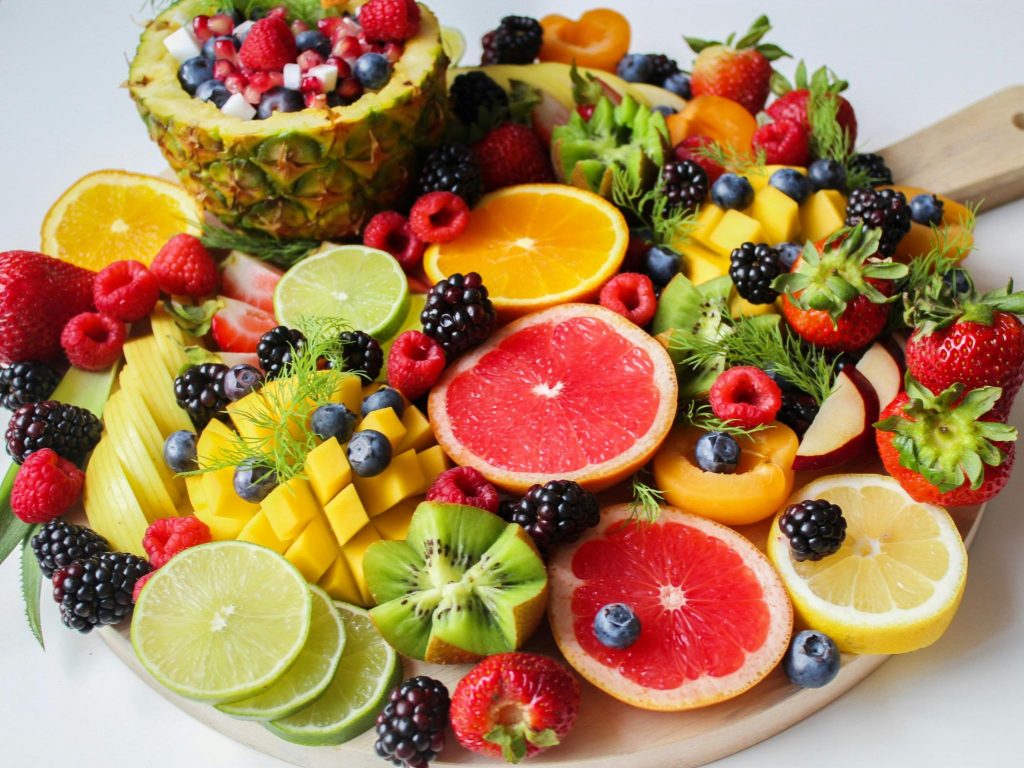Building Your Meals Around Fruits and Veggies: The Secret to a Healthier, Happier You
When it comes to improving health, boosting energy, and even supporting weight loss, there’s one simple but powerful habit that stands above the rest: eating more fruits and vegetables. By making fruits and vegetables the centerpiece of your meals, you’re not only nourishing your body with essential nutrients but also creating meals that are vibrant, satisfying, and naturally low in calories.
In this post, we’ll explore why building your meals around fruits and vegetables is such a game-changer, how to do it effectively, and some tips to make it both easy and enjoyable.

Why Fruits and Vegetables Deserve Center Stage
Fruits and vegetables are nature’s nutritional powerhouses. Here’s why they should be the foundation of your meals:
1. Packed with Nutrients
Fruits and vegetables are rich in vitamins, minerals, fiber, and antioxidants, all of which play a vital role in keeping your body functioning at its best. From vitamin C in citrus fruits to potassium in leafy greens, they provide the building blocks for health.
2. Low in Calories, High in Volume
Most fruits and vegetables are naturally low in calories while being high in water and fiber. This means you can eat generous portions that fill you up without consuming too many calories—perfect for weight management.

3. Supports Digestive Health
The fiber in fruits and vegetables helps keep your digestive system running smoothly. It promotes regularity, prevents constipation, and feeds healthy gut bacteria.
4. Reduces Risk of Chronic Diseases
Studies consistently show that diets high in fruits and vegetables are associated with lower risks of heart disease, diabetes, and certain cancers. The antioxidants they contain also combat inflammation and oxidative stress.
5. Improves Energy Levels
Natural sugars in fruits and the complex carbohydrates in vegetables provide sustained energy. Unlike processed foods, they won’t leave you with a sugar crash.

How to Build Your Meals Around Fruits and Vegetables
Transitioning to a fruit- and veggie-focused way of eating doesn’t have to be complicated. Here’s a step-by-step guide to making them the star of your plate:
1. Start with the Veggies
When planning your meal, think about which vegetables you want to include first. Fill at least half your plate with colorful options like leafy greens, bell peppers, broccoli, carrots, or zucchini. Aim for variety to get a range of nutrients and flavors.
2. Add a Fruit Component
Incorporate fruits into your meals as a natural sweetener or refreshing side. Think sliced oranges in salads, berries in oatmeal, or grilled pineapple with savory dishes. Fruits can also double as dessert, satisfying your sweet tooth without added sugar.

3. Pair with Protein
Balance your meal by adding a source of protein like beans, lentils, tofu, eggs, chicken, or fish. This ensures you’re getting all the nutrients you need while keeping you full and satisfied.
4. Include Whole Grains or Healthy Fats
Round out your meal with whole grains (like quinoa, brown rice, or whole-grain bread) or healthy fats (like avocado, nuts, or olive oil). These add flavor, texture, and additional nutrients.
5. Use Herbs and Spices
Enhance the flavor of fruits and vegetables with fresh herbs, spices, and seasonings. Basil, cilantro, garlic, paprika, and lemon juice can transform a simple dish into something extraordinary.

Creative Ways to Center Your Meals Around Fruits and Vegetables
If you’re new to this approach, it can be helpful to start with specific ideas and recipes. Here are some creative ways to make fruits and vegetables the centerpiece of your meals:
Breakfast
- Smoothie Bowls: Blend frozen berries, spinach, and a banana with plant-based milk. Top with sliced fruit, nuts, and seeds.
- Veggie-Packed Omelets: Fill your omelet with sautéed spinach, mushrooms, bell peppers, and tomatoes.
- Avocado Toast with a Twist: Add sliced radishes, cucumber, and pomegranate seeds for extra crunch and flavor.

Lunch
- Big Veggie Salads: Use a mix of leafy greens as your base, then pile on roasted vegetables, chickpeas, and a handful of fresh berries. Dress with a light vinaigrette.
- Wraps and Sandwiches: Use lettuce or whole-grain wraps filled with grilled veggies, hummus, and your choice of protein.
- Vegetable Soup: Make a hearty soup with carrots, celery, zucchini, and beans. Serve with a side of fruit for a balanced meal.
Dinner
- Stir-Fries: Sauté a mix of broccoli, snow peas, carrots, and mushrooms with a splash of soy sauce. Serve over brown rice or quinoa.
- Veggie Pizzas: Use a whole-grain crust and top with tomato sauce, spinach, roasted eggplant, and fresh basil.
- Zucchini Noodles or Spaghetti Squash: Replace pasta with veggie noodles and pair with marinara or pesto sauce.

Snacks and Desserts
- Fruit Kabobs: Skewer a mix of grapes, melon, and strawberries for a fun snack.
- Veggie Sticks and Dip: Pair carrot and cucumber sticks with hummus or a yogurt-based dip.
- Frozen Fruit Treats: Freeze grapes, banana slices, or blended mango for a refreshing dessert.
Overcoming Common Barriers
Even with the best intentions, it’s easy to hit roadblocks. Here are some strategies to overcome common challenges:
“I Don’t Have Time to Prep”
- Batch-prep veggies and fruits for the week. Wash, chop, and store them in containers for easy access.
- Use frozen fruits and vegetables—they’re just as nutritious and require no prep.

“It’s Too Expensive”
- Buy seasonal produce, which is often cheaper and tastier.
- Shop at local farmers’ markets or look for sales at your grocery store.
- Incorporate more budget-friendly options like carrots, cabbage, bananas, and canned beans.
“I Don’t Like Vegetables”
- Experiment with different cooking methods, such as roasting, grilling, or steaming, to bring out natural sweetness.
- Mix vegetables into dishes you already enjoy, like blending spinach into smoothies or adding zucchini to pasta sauce.

The Benefits You’ll Notice
When you build your meals around fruits and vegetables, the benefits go beyond the physical. Here’s what you can expect:
- Weight Management: The high water and fiber content helps you feel full, reducing overeating.
- Increased Energy: Nutrient-dense meals provide lasting energy for your busy days.
- Better Mood: The vitamins and minerals in fruits and vegetables support brain health and emotional well-being.
- Glowing Skin: Antioxidants and hydration from fruits and veggies can lead to clearer, more radiant skin.
- Improved Long-Term Health: A diet rich in fruits and vegetables lowers the risk of chronic diseases and supports overall longevity.

Final Thoughts: Small Changes, Big Impact
Building your meals around fruits and vegetables doesn’t mean you need to overhaul your diet overnight. Start with small changes—add an extra serving of vegetables to your dinner, swap out chips for sliced cucumbers, or top your morning oatmeal with fresh berries. These small steps add up, transforming your diet and your health over time.
By making fruits and vegetables the star of your plate, you’re nourishing your body, boosting your energy, and creating meals that are as beautiful as they are beneficial. The best part? The possibilities are endless, and you’ll discover new flavors and combinations that keep your meals exciting and satisfying.
So, the next time you plan a meal, start with fruits and veggies. Your body—and your taste buds—will thank you!
💬 Join the Bariradka Transformation Support group on Telegram!
Get exclusive tips, behind-the-scenes content, and chat directly with the author.
➤ Join the Community

